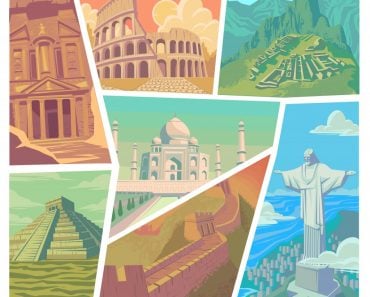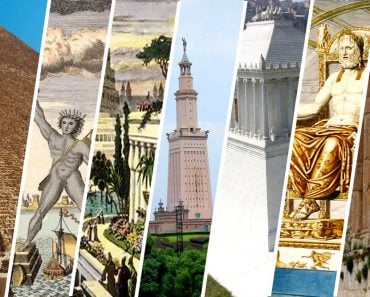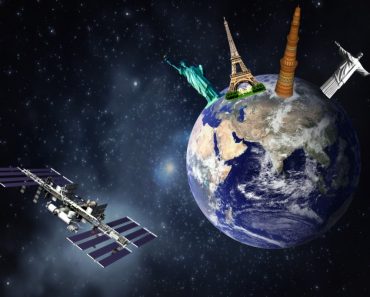The Great Wall of China was built by different emperors and dynasties over the centuries. It was originally built to protect China from foreign invaders, but it was later used as a tactical advantage against the invading Japanese army during World War II.
China’s terrain is largely flat, making the country extremely vulnerable to foreign invaders and looters. This is why China made the choice to build a wall–The Great Wall of China. The Great Wall was also used as a tactical advantage against the invading Japanese army during World War II.
There is nothing more iconic in Chinese history than the Great Wall of China. It is considered one of the Wonders of the World and with good reason! After all, the Great Wall of China is the longest structure ever built! If we consider every section of the Great Wall, including the bits that re-route away from the main structure, the length of the Wall would run for a total of 21,196 km (13,170 miles)!
Obviously, generations of hard work were poured into the construction of this magnificent structure, but why would any civilization choose to construct such a maddeningly massive project? Why would anyone want to build such a huge wall?
Actually, don’t answer that.

No other ancient civilization ever pursued anything on this scale, so what set the Chinese apart?
The answer actually lies in geography.
Recommended Video for you:
Why Was The Great Wall Of China Built? – Terrain
The Chinese civilization flourished in the fertile plains of East Asia and they were blessed with a large number of river systems. Unsurprisingly, the Chinese made prominent strides in ancient agricultural technology. All of this contributed to most of the country’s citizens choosing a quiet domestic life governed by a cohesive political state.
Nature, however, was not as kind to China’s neighbors. Central and Northern Asia were mostly just arid plains, so the inhabitants of these lands never even had the option to simply settle down. Instead, they were forced to pursue the pastoral life. However, even this could hardly satiate their basic needs. It comes as no surprise that the nomadic tribes of these regions found it preferable to attack the prosperous lands of China instead!
Nestled between the inhospitable Tibetan Plateau to the west, the formidable Himalayas in the south and the vast Pacific Ocean to the east, China was extremely well protected, with the glaring exceptions of the north and the northwest side of the empire. Both of these areas were left wide open for the Mongol, Turkish and Xiongnu tribes to attack.

China’s terrain is largely flat, making the country extremely vulnerable to foreign invaders and looters. This is why China made the choice to build a wall.
Well, not just a single wall… more like several different walls being blended together.
You see, the sections of the Great Wall were not made by a single emperor. Different parts were constructed in different centuries. Basically, the Great Wall was an ongoing project that ancient China just refused to let go of.

Warring States Period – The Beginning
The earliest mention of the Great Wall was in 7th century BCE Chinese poems. Before China was unified under the Qin dynasty, there were many bickering, warring states that were vying for power. These states were all ruled by different overlords.
One of them, the duke of the Qi state, decided to build a wall to block the neighboring Chu state. The other overlords followed suit and built their own walls. These walls became the earliest sections of what would eventually be known as the Great Wall.
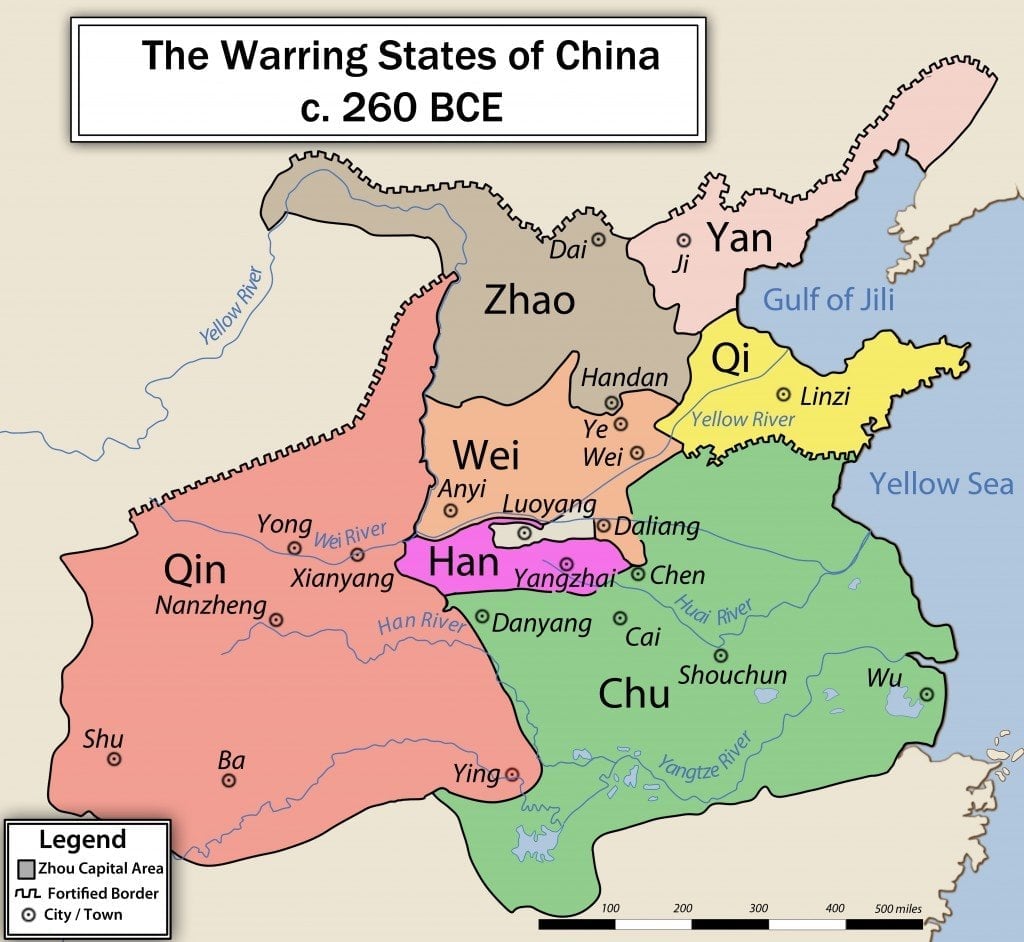
Qin Dynasty – The Unification
In 221 BC, something extraordinary occurred. Emperor Qin Shi Huang (the one with the terra cotta army) united all of China under his reign! However, as we know, with great power comes great responsibility, and the Emperor had to find a new way to protect the sovereignty of his empire. To do so, he chose to make best of what he already had.
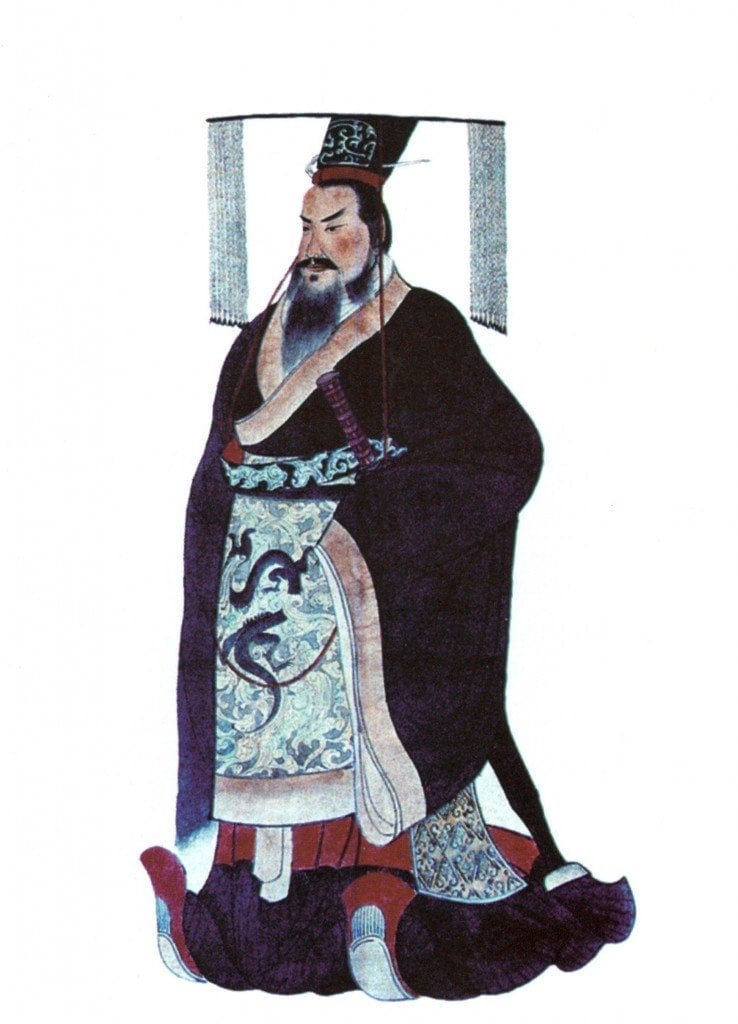
He began connecting all the walls that had previously been constructed by the warring states and fortified them with the newest technology available. His new 5000-kilometer wall stretched all the way from Lintao to the west and Liaodong to the east. According to today’s maps, it linked walls from the Gansu Province, Ningxia Hui Autonomous Region, Shaanxi and Shanxi provinces, Inner Mongolia, Hebei and Liaoning provinces, as well as North Korea.
This wall came to be aptly called the Long Wall.
Han Dynasty – The Expansion
Under a new emperor, Han Gaozu, the wall expanded even further. By the end of his reign, the wall stretched almost 6000 km, starting from Dunhuang in the east and ending at the Pacific Ocean in the west.
A later emperor of the Han dynasty, Han Wudi, eventually opened the Silk Road to trade with the West. However, the Silk Road was prone to attacks from the violent Mongolian tribes. Thus, Han Wudi had another reason to strengthen and further extend the Great Wall westwards.
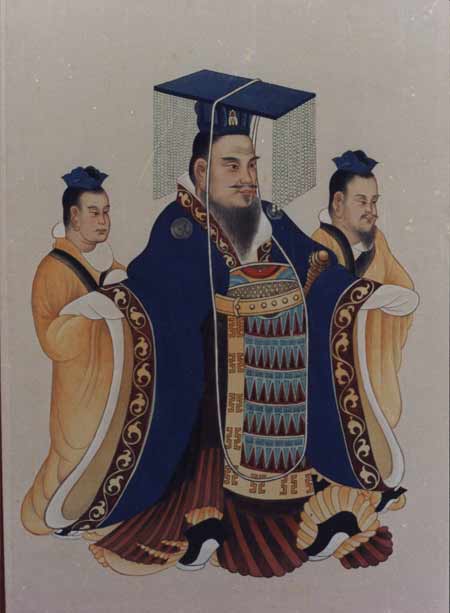
Despite the extreme cautionary measures, the Great Wall was not completely insurmountable. The Mongolians were more clever than the Chinese could ever imagine! Both Genghis Khan and Kublai Khan managed to surpass the Wall and conquer China during their respective rules. Following Kublai Khan’s invasion in the 11th century AD, China was incorporated into the Mongol Empire and was ruled under the Mongol-led Yuan Dynasty.
Ming Dynasty – The Revival
The Ming Dynasty overthrew the foreign rule of the Yuan Dynasty in the late 13th century AD. Now that the Chinese were back, they decided to make some serious upgrades to the Great Wall, which was their one and only line of defense against future invaders.
The Emperors of the Ming Dynasty never actually stopped building and adding on to the Wall. For 3 straight centuries, new sections were added to the Wall while the older areas were repaired and fortified.
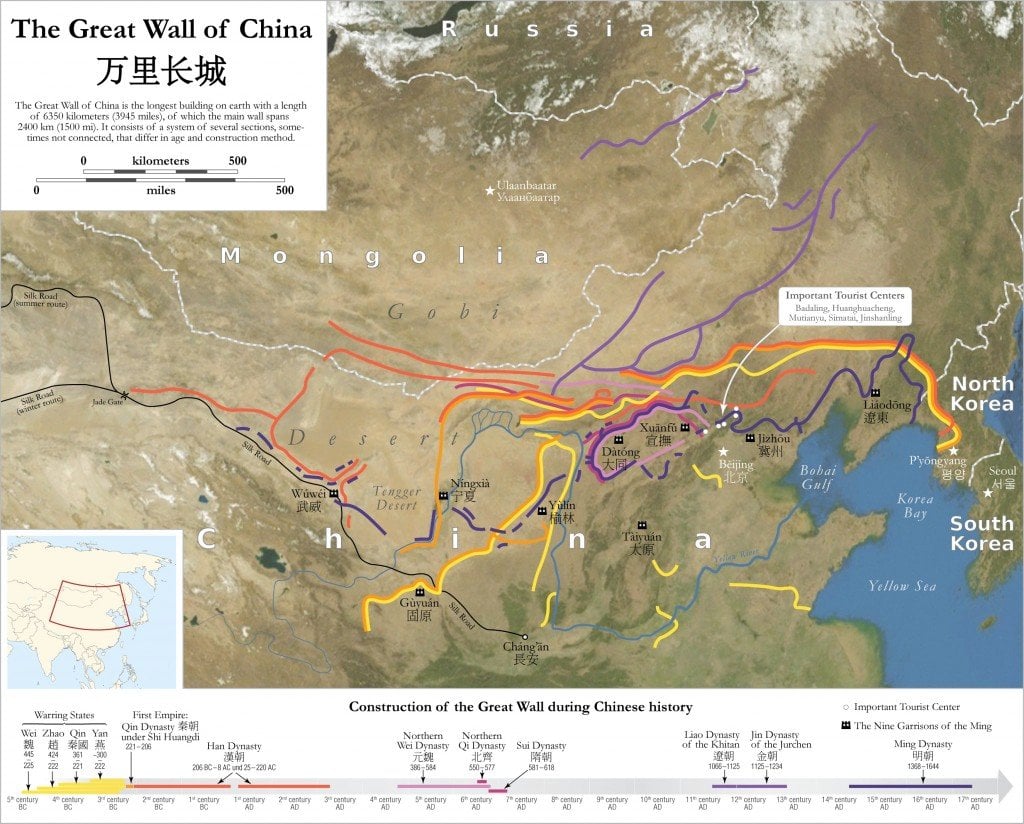
Qi Jiguang, a legendary 15th century general, who also saved China’s coastlands from Japanese pirates, was responsible for the construction of the Ming Great Wall. Some of the most famous sections of the Great Wall were built directly under his supervision!
Qing Dynasty – The End
In 1644, despite the Ming Dynasty’s constant vigilance, the Great Wall of China, once again, proved ineffective against foreign invasions. This time around, the invaders came from the northern Manchu state. The Manchurian clans overthrew the reigning Ming Dynasty and established their own Qing Dynasty.
Under the Qing Dynasty, the Great Wall fell into disrepair. Of course, that shouldn’t come as a surprise. After all, the Wall was constructed to keep out the very people who were now responsible for its maintenance. Aside from their personal agenda against the Wall, there was also one logistical reason for their disinterest. Since Manchu was incorporated into China, the Great Wall was no longer on the border of the Empire, but rather in the center, so it became obsolete.
The Great Wall was once used as a tactical advantage against the invading Japanese army during World War II. There are also rumors that some areas of the Great Wall are still used for training the modern Chinese military. However, other than these isolated incidents, the Wall no longer serves any defensive purposes. It is, however, a global cultural phenomenon like nothing else in the world.
Even so, it seems like a strange twist of fate that the magnificent Great Wall of China, which once prevented invaders from entering Chinese lands, is now forever burdened with millions of foreign tourists every year!


